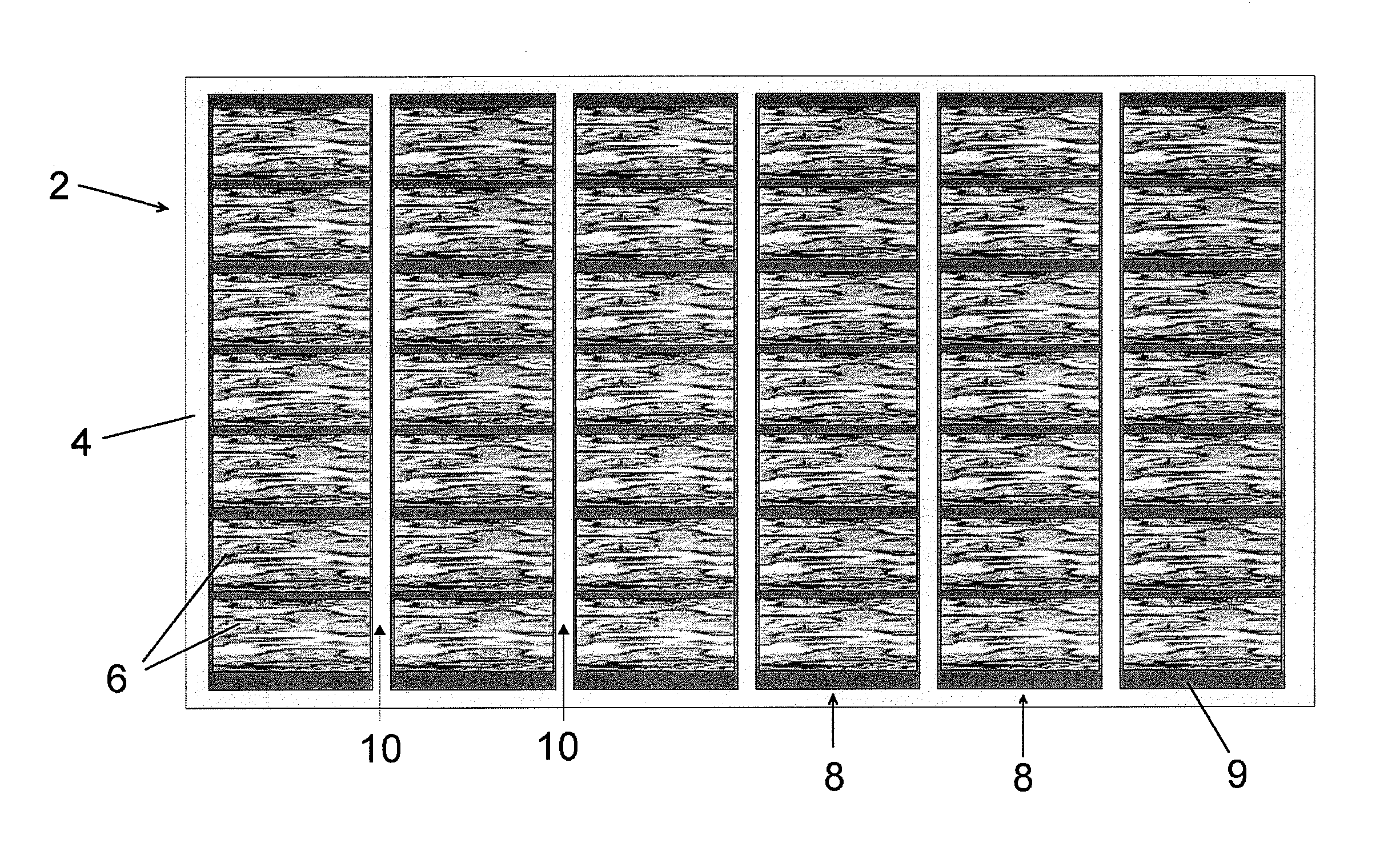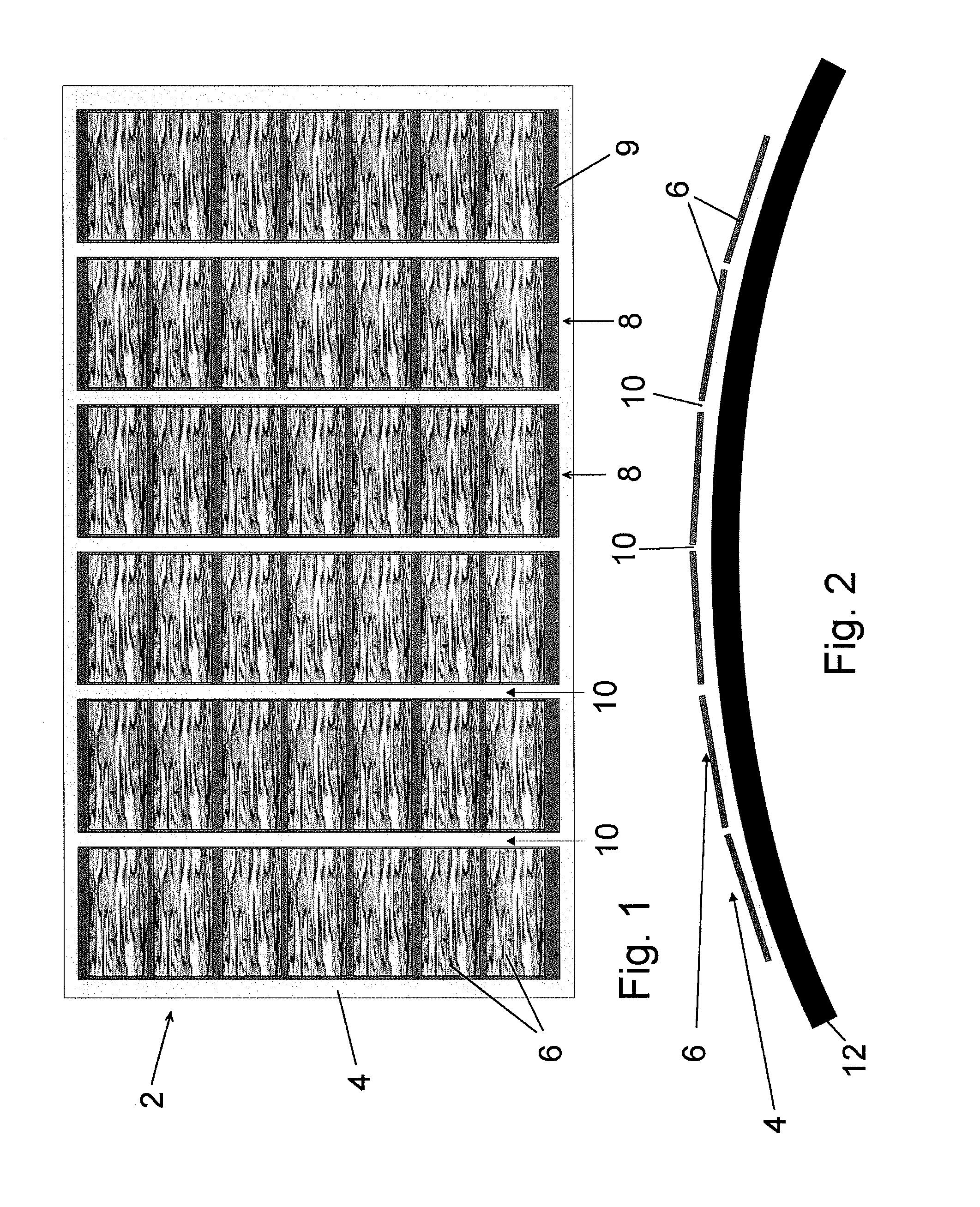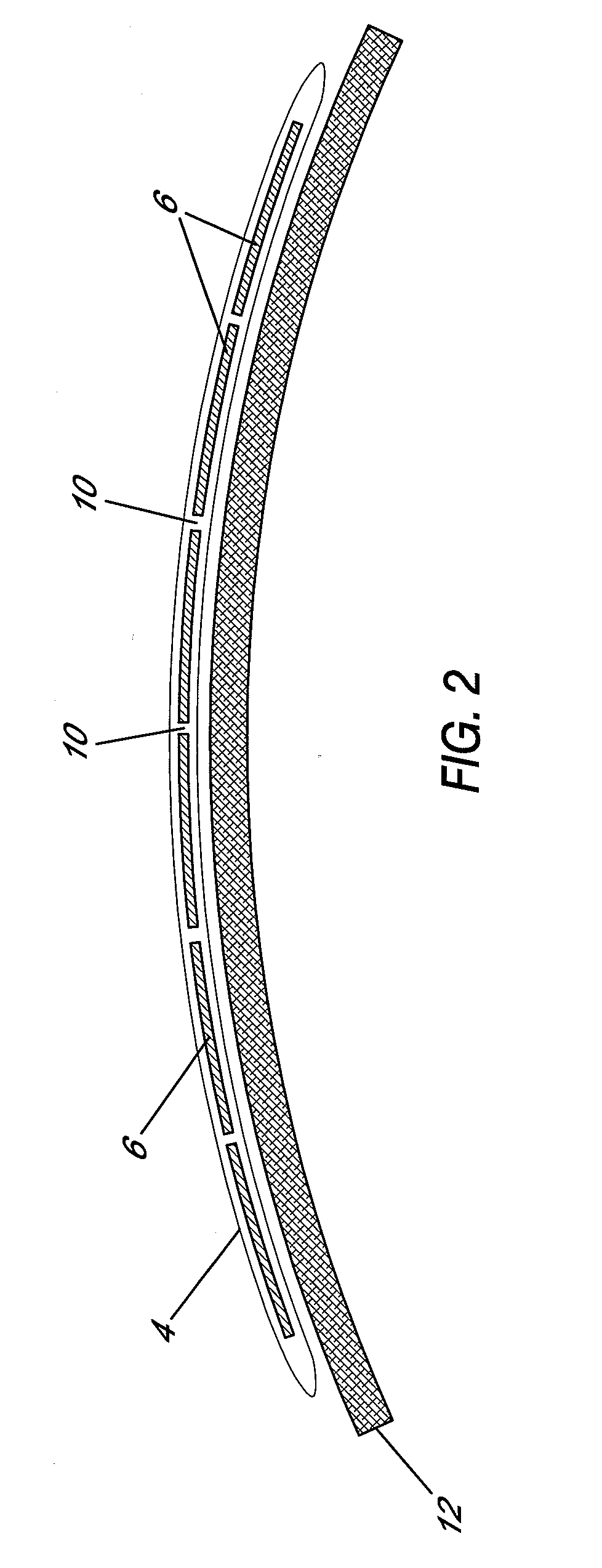Solar panel
a solar panel and panel technology, applied in the field of solar panels, can solve the problems of inconvenient mounting on curved surfaces, inflexible mono- and polycrystalline photovoltaic cells, and inability to bend easily, so as to achieve the effect of not affecting the flexing of the panel
- Summary
- Abstract
- Description
- Claims
- Application Information
AI Technical Summary
Benefits of technology
Problems solved by technology
Method used
Image
Examples
Embodiment Construction
[0029]The solar panel 2 shown in FIG. 1 includes a rectangular support element 4 that is made of a flexible polymeric material, for example polyethylene terephthalate (PET). The support element supports a two-dimensional array of photovoltaic cells 6, which are embedded within the polymeric material of the support element 4. The cells 6 are arranged in six parallel rows 8, each row containing seven cells on a printed circuit board substrate 9 of fiberglass (e.g. FR4). The PCB substrate 9 carries the electrical connections (not shown) to the cells 6.
[0030]The parallel rows of cells 6 are spaced apart with 2 mm gaps between adjacent rows 8. The flexible polymeric support element provides a plurality of parallel flexible hinges 10 in the gaps between the spaced apart rows 8. The hinges 10 allow the solar panel 2 to flex without excessively bending or stressing the individual cells 6. This allows the panel 2 to be mounted on a curved mounting surface 12, for example the roof of a bus sh...
PUM
 Login to View More
Login to View More Abstract
Description
Claims
Application Information
 Login to View More
Login to View More - R&D
- Intellectual Property
- Life Sciences
- Materials
- Tech Scout
- Unparalleled Data Quality
- Higher Quality Content
- 60% Fewer Hallucinations
Browse by: Latest US Patents, China's latest patents, Technical Efficacy Thesaurus, Application Domain, Technology Topic, Popular Technical Reports.
© 2025 PatSnap. All rights reserved.Legal|Privacy policy|Modern Slavery Act Transparency Statement|Sitemap|About US| Contact US: help@patsnap.com



